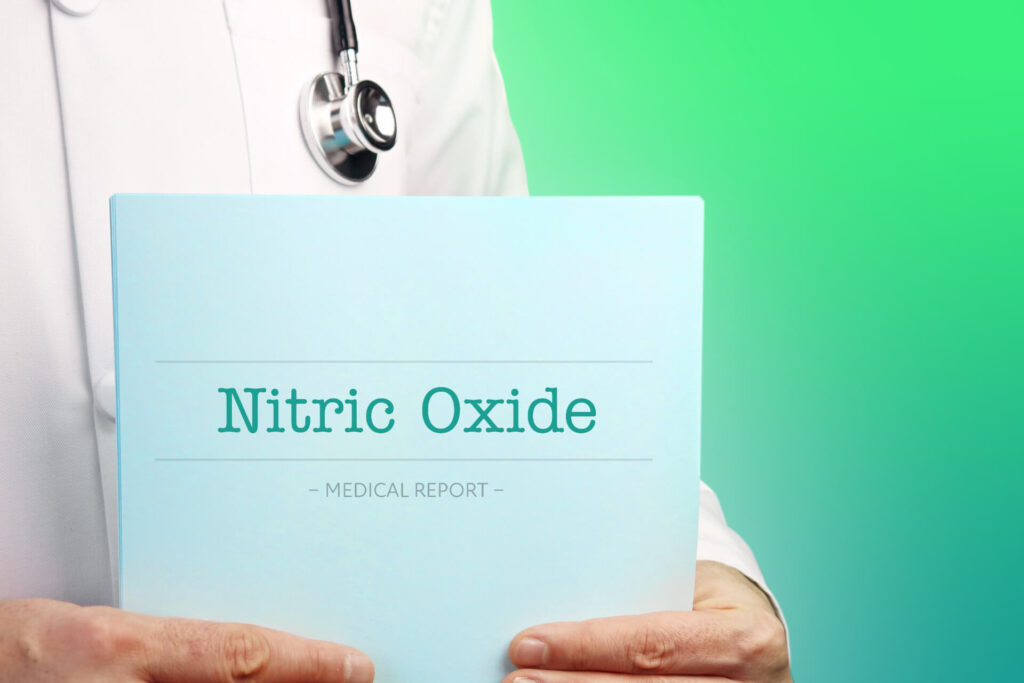“If you want to understand the universe, think of energy, frequency and vibration.” Nikolas Tesla.
Sunlight is the ultimate source of life; without it, humans and all life on earth would not exist. Every thought we have, every movement, breath, and heartbeat, all require energy. That energy ultimately came from the sun.
Sunlight has always played an essential role in healing. Yet, with the recent fear of skin cancer, public messages now focus on the danger of too much sun.
Yes, there is harm from overexposure. Too much of a good thing ultimately creates harm. As always, it’s about Balance.
With the recent explosion in laser, photobiomodulation, deep red and infrared therapies, all of which use specific wavelengths found in sunlight, we are beginning to understand just how vital sunlight is for maintaining health.
Part 1 of this 2-Part series explores how sunlight’s different wavelengths and energies control our health. Equipped with this understanding, Part 2 provides creative ways to maximize sunlight’s benefits and reduce its harm.
Let's Get Started
What is Light
Everything around us and throughout the universe radiates and reflects different forms of electromagnetic (EM) energy, from high-frequency, high-energy gamma rays to low-energy radio waves.
In the middle of this electromagnetic (EM) spectrum is a tiny band of radiant energy we call visible light. So-called because it is the only part of the EM spectrum our eyes and brain have evolved to detect.
Like all bands in the EM spectrum, visible light is not a single wavelength of energy. Visible light ranges from 380-425 Nanometres (NM) – which our brain converts to the colour violet- to 620-740NM, which our brain converts to red.
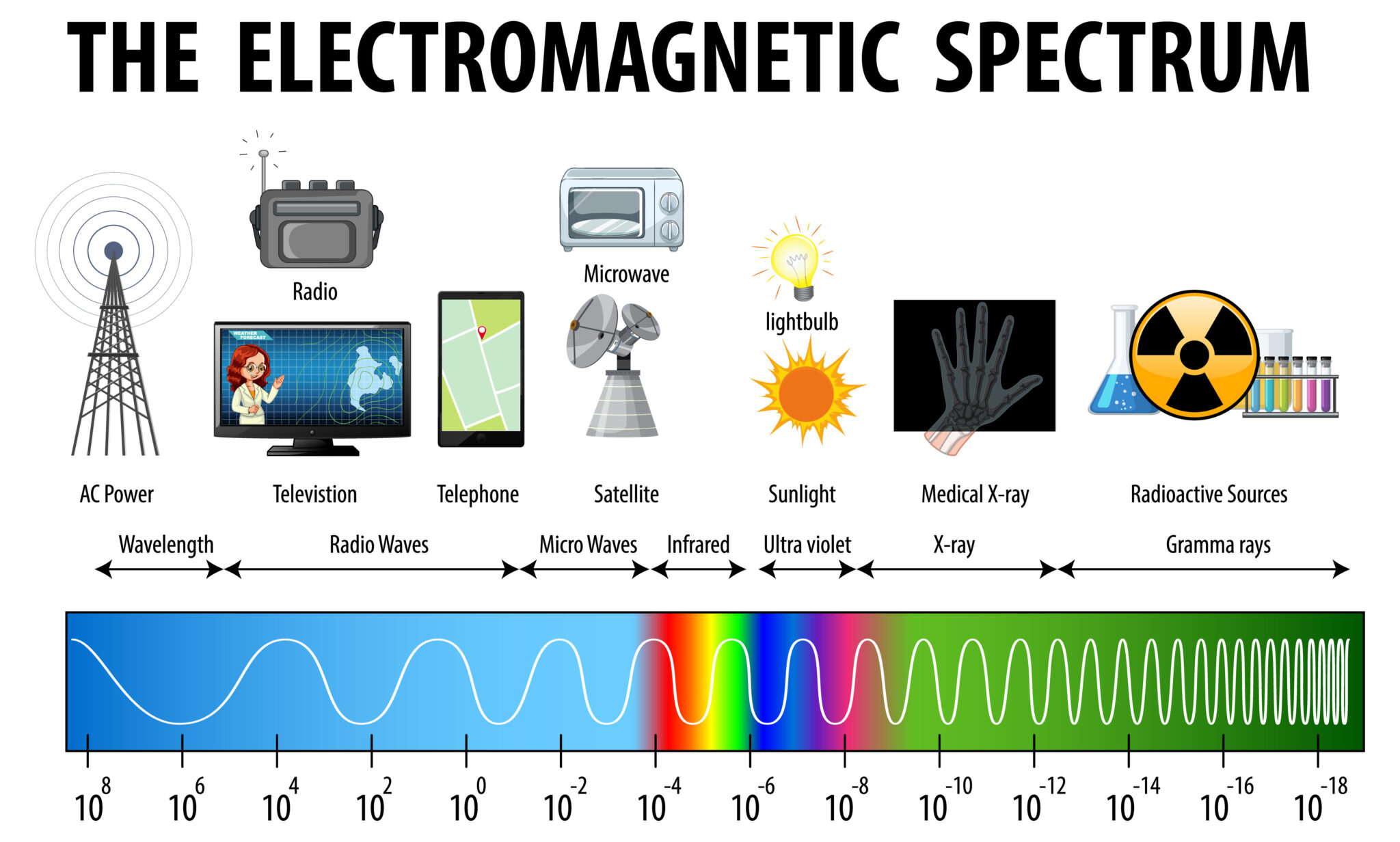
Note that colour is not an intrinsic property of visible light. Objects don’t have a colour. Objects reflect different wavelengths of electromagnetic energy, and our brains convert that wavelength into a colour. Colour exists only in the mind of the beholder.
What is Sunlight
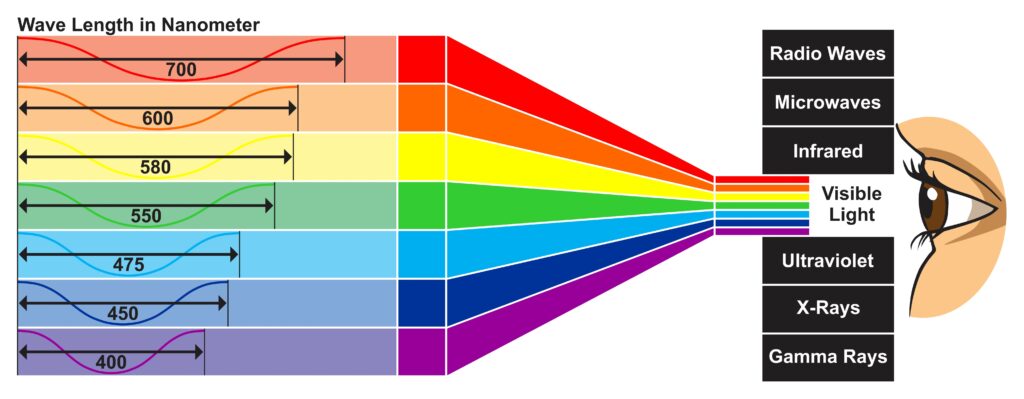
Sunlight is simply the mix of the electromagnetic radiation given off by the sun. That exact mix depends on the time of day, time of year, your distance from the equator and how high up you are from sea level. On average, sunlight is over 52% infrared energy, 43% visible light energy, and less than 5% UV energy. Skin cancer and photoaging come from UV energy, and UV energy makes up less than 5% of sunlight!
If you measured sunlight’s radiant energy in a plane or on top of a high mountain, sunlight would have a higher percentage of UV light. But thanks to our atmosphere, with a special thank you to the ozone layer, most of sunlight’s original UV radiation gets blocked in its 8.5 mins journey from the sun’s surface to your skin.
The more atmosphere sunlight goes through, the more UV radiation gets blocked. When the sun reaches us from an oblique angle, as it does at sunrise or sunset, it travels through more atmosphere than when it is directly overhead. So midday sun has more UV radiation than sunset sun because the sun is directly overhead. And for the same reason, the summer sun has more UV radiation than the winter sun.
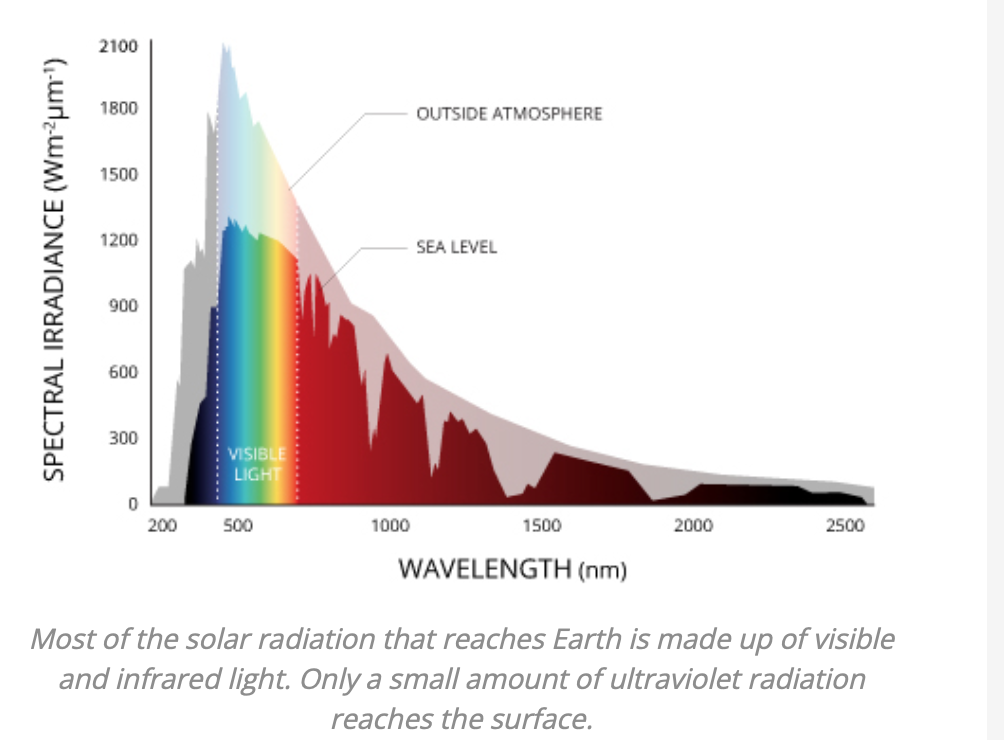
Sunlight on the top of the mountain will have more UV radiation than sunlight at sea level because sunlight travels through less atmosphere on a mountain to reach your skin.
The more particulate matter in our atmosphere, including water vapour (i.e. clouds), the more UV radiation gets blocked.
How much UV radiation we absorb depends on all the above, plus our fat content, skin pigmentation and the amount of time in the sun. The more skin pigmentation in our skin ( darker skin colour), the more UV light gets blocked, and the less risk we have of skin cancer, but the higher our risk of vitamin D deficiency.
Is UV Rays Bad for Us
UV rays have the highest energy of all sunlight’s EM spectrum. Their high frequency and vibration are so strong they can knock electrical charges off DNA or proteins, leading to a change in their 3-dimensional shape and, thus, their function. This potential DNA change can lead to cancer.
But note from the diagram that out of all sunlight’s different energies, UV energy only penetrates the superficial layers of your skin. So any potential DNA damage/cancer are limited to the more superficial layers of your skin.
What blocks UV rays from penetrating deeper? Melanocytes, special skin cells that produce melanin, a pigment that blocks UV rays from penetrating deeper.
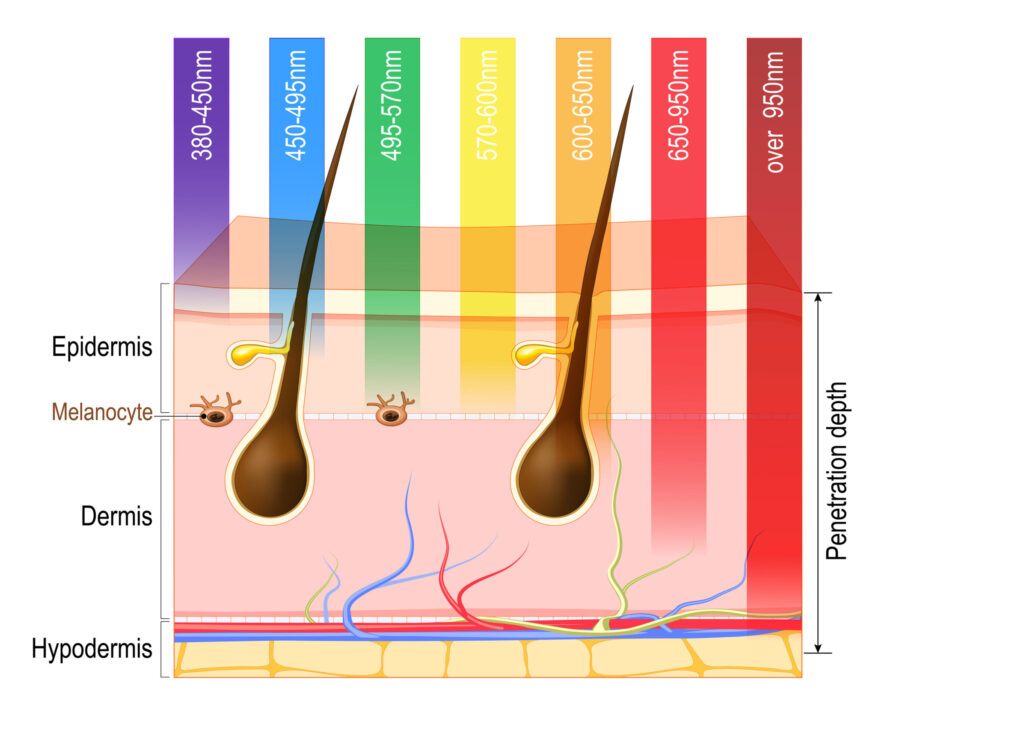
When our skin is exposed to UV light, melanocytes produce more melanin, leading to a tan. This process helps to protect the skin from further damage and is the body’s natural defence against sunburn. The more melanin we have, the darker our skin, hair and eyes, and the less likely we are to get skin cancers or photoaging.
So yes, UV light can cause skin cancers, photoaging, age-related macular degeneration and cataracts. However, according to the WHO, the global burden of disease from excessive UV radiation is much smaller than that from too little UV exposure
Living at higher latitudes increases your risk of dying from Hodgkin’s lymphoma, breast, ovarian, colon, pancreatic, prostate and other cancers. And as you leave the equator, there is a latitudinal increased risk of MS, diabetes, metabolic syndrome and cardiac diseases. There is also evidence that sun exposure can reduce your risk of asthma, RA and infectious disease.
UV Makes Vitamin D
So what is so essential about UV Rays that make us unhealthy without them? That high vibrational energy that can alter your skin’s DNA and potentially cause cancer can also convert a type of cholesterol in your skin into one of the most vital molecules for your overall health, Vitamin D.
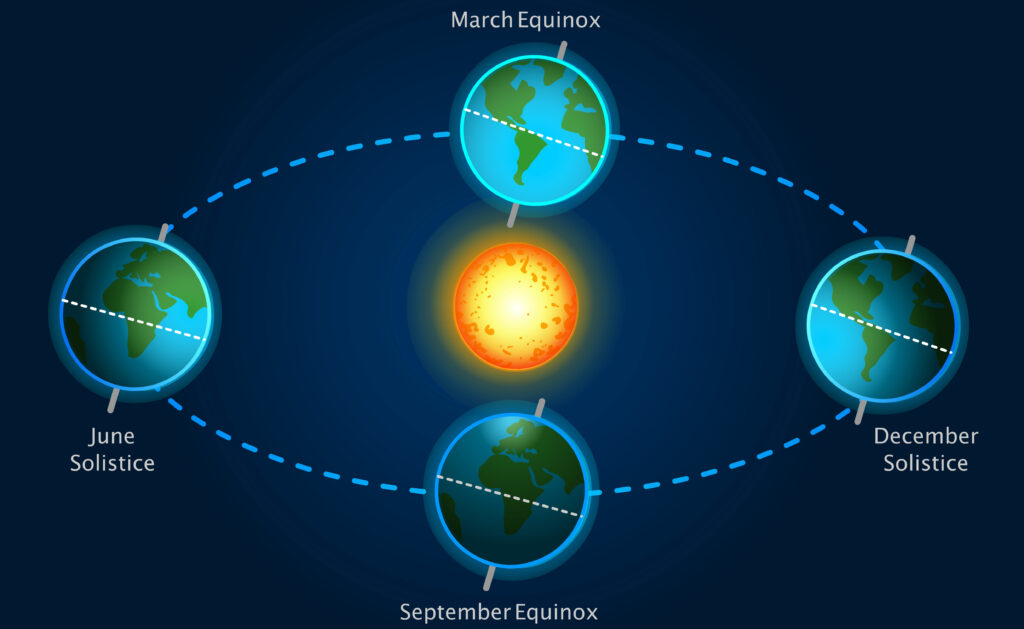
Vitamin D regulates at least 1,000 genes governing virtually every body tissue, including several involved in calcium metabolism, immune system and neuromuscular functioning, bone health, hormone balance and cell growth and differentiation.
Recall that UV radiation makes up only 5% of sunlight. Thanks to our atmosphere and the ozone layer, that 5% UV radiation is 95% UVA (longer wavelength, less energy and less damaging) and only 5% UVB. It is UVB that makes Vitamin D, so it is only 5% of 5% of sunlight responsible for making such a vital substance.
Given the importance of Vitamin D and the lack of UVB radiation in winter sunlight, taking vitamin D3 as a supplement is a must.
Most national institutes still recommend 400IU/day of Vitamin D3.
Based on recent research, most experts now recommend at least 2,000 IU of vitamin D3 per day if you are not exposed to UVB. Look for supplements that provide D3 (cholecalciferol) rather than D2 (ergocalciferol).
No adverse effects have been seen with supplemental vitamin D intakes up to 10,000 IU daily. Exposing your face and hands to roughly 10 minutes of direct sunlight daily is also quite safe and a good way to boost vitamin D
UV Makes Nitric Oxide
Sunlights UV rays do more for us than make vitamin D. Named a critical antiaging molecule by Nobel Laureate Louis Ignarro, nitric oxide forms when sunlight’s UV energy enters our skin.
Whereas UVB produces Vitamin D, UVA produces nitric oxide.
Nitric oxide is a potent vasodilator. It relaxes all the little muscles around your blood vessels, allowing more blood to flow through. More blood flow means more nutrition and quicker toxin removal enabling your body to function more efficiently.
Nitric Oxide is the key to the success of erectile dysfunction medications, nitroglycerin tabs to manage angina, and it is a powerful agent to reduce blood pressure.
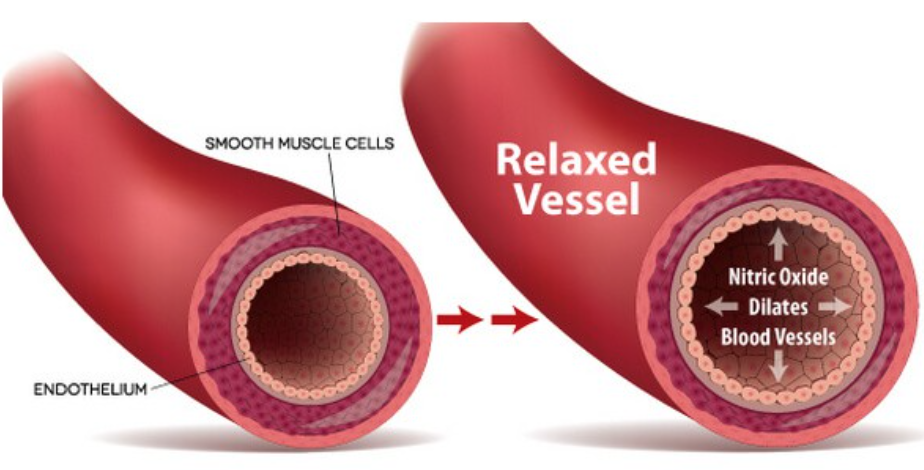
Your skin contains large stores of nitrite and nitrate, but only the nitrite is biologically active. Sunlight appears to prompt the conversion of nitrate to nitrite and nitric oxide (NO). Nitric oxide production by the sun is likely explains why the incidence of cardiovascular disease, including strokes and heart attacks, is significantly higher in winter months. Learn More
Vitamin D and Nitric Oxide production are just two of the health benefits of exposure to sunlight’s UV rays. Other benefits include:
- Treatment of various skin conditions (psoriasis, eczema and vitiligo).
- Potential reduction of some cancers (breast, prostate, and colon cancer).
- Improved immune function: UV light can help stimulate the production of white blood cells. Ever noticed you get more colds in winter?
- Pain relief: UV light therapy can relieve pain from arthritis, fibromyalgia, and chronic pain. Notice your aches and pains are less in the sun?
Sunlight: Your Natural Anti-Depressant
There is a strategic yet tiny structure in the brain called the suprachiasmatic nucleus, SCN for short. Your SCN is your master clock. It synchronizes your hormone levels, temperature, energy levels and many other body functions that wax and wane to a 24-hour rhythm.
When morning sunlight hits your eyes, it activates a photopigment called melanopsin in your retina. Melanopsin converts sunlight’s energy into an electrical signal that fires along your optic nerve to your SCN, which tells your brain to make serotonin.
Serotonin, the feel-good neurochemicals behind most antidepressants, does more than lift your mood. It provides mental clarity, appetite, and aids in digestion.

The length and intensity of exposure to sunlight do matter. In winter, when the days are short, and the sun’s power is lowest, your brain cannot make as much serotonin, potentially leading to Seasonal Affective disorder or SAD. Less light means less potential to make serotonin and maintain your mood.
Note that it is primarily blue light and green light from sunlight’s energy spectrum that activates serotonin. SAD Lamps mimic that energy spectrum and do work for treating SAD. However, because they radiate primarily visible light, they do not provide the other health benefits of sunlight, such as those caused by the deep red and infrared energy in sunlight.
Sunlight: Your Natural Sedative
Morning sunlight wakes our brain, produces serotonin and tells all our biological clocks it’s daylight time to be active. Make hay while the sun shines. But when the light in our eyes fades, sunset, your SCN tells your brain to stop making serotonin and instead convert it into melatonin to adjust your circadian rhythms towards sleep.
Melatonin is your internally produced sedative. Melatonin tells all your biological functions to settle and prepare for sleep.
Sunlight in your eyes in the morning wakes you up, and the lack of sunlight in your eyes after sunset prepares you for sleep.
This routine sleep-wake cycle is essential for our health! It synchronizes all our biological functions to turn on during the day and calm down at night.
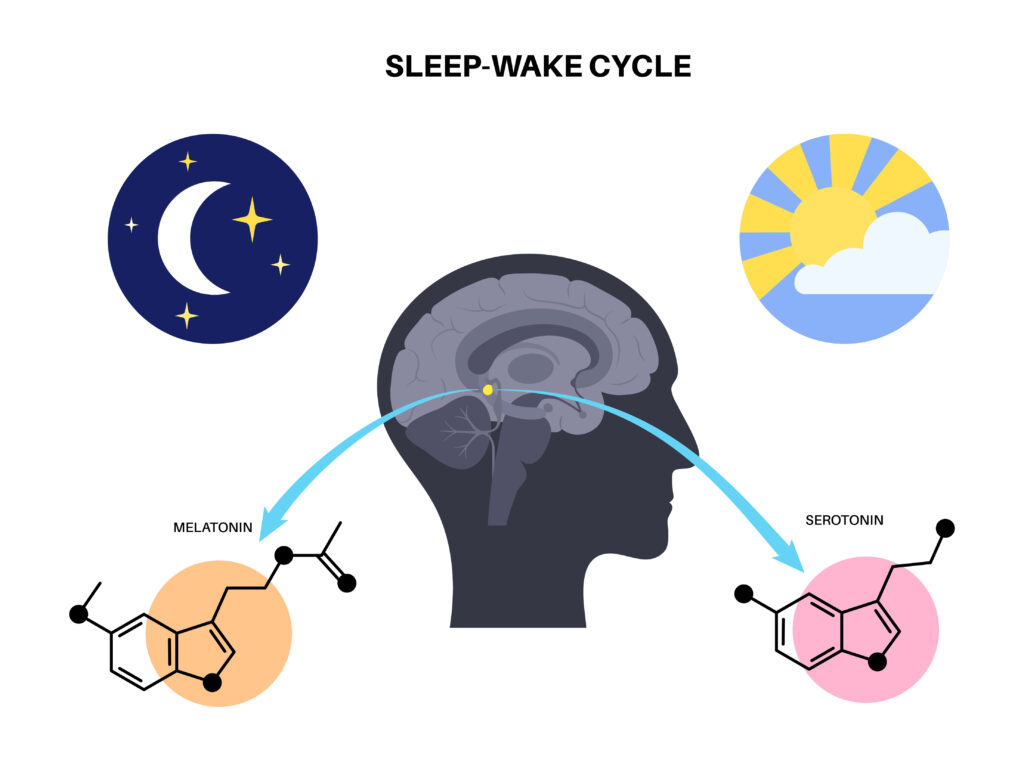
When our bodies no longer synchronize to a routine light and dark cycle, we become desynchronized. Jet lag, shift work and computer screens before bed desynchronize us. We become groggy, and we cannot operate effectively.
Yet there is more than efficiency we lose. Studies show that shift workers- likely due to their desynchronized circadian rhythms -die several years younger than non-shift workers. Research on rats shows that desynchronization leads to premature cellular aging, as measured by telomere length.
As mentioned earlier, it is primarily blue light and the lack of it at night that controls our sleep-wake cycle. There is a ton of blue light in our cell phones and computer screens.
When we stare at our computer long after the sun sets, we disrupt our sleep-wake cycle and delay our brain producing melatonin to help us sleep.
Avoid staring at your computer or cell phone screen at night, and always switch your phone to “night shift” after dark. Night shift mode blocks some blue light but not all. If you must stare at your computer after dark, consider additional blue light-blocking methods such as blue light-blocking glasses or a special blue light-filtering screen.
You need routine in your sleep-wake cycle. Without it, you are at risk of premature aging.
Sunlight: Your Free Red Light Therapy
While scientists at NASA were working on growing plants in space using specific light-emitting diodes (LED), they noticed a strange side effect. They found that abrasions on their hands seemed to heal faster than normal. Further studies showed that high-intensity red and near-infrared LEDs significantly accelerated the healing of oxygen-deprived wounds and sped the growth and proliferation of skin, bone, and muscle cell cultures from mice and rats.
These and other studies led to an explosion of gadgets, including cold laser therapy and various handheld and home panel deep red and infrared LED kits to promote healing and reduce inflammation.
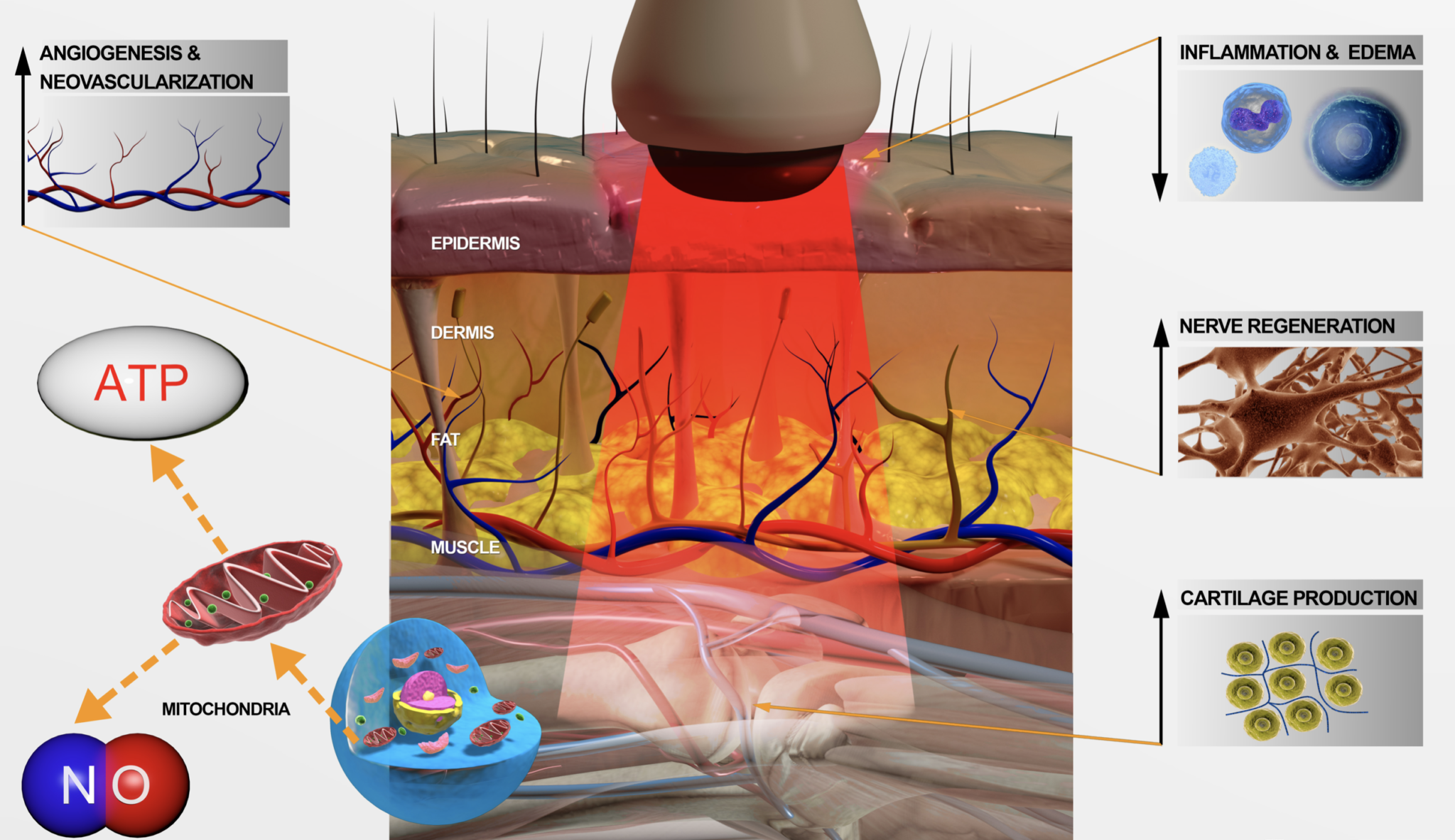
The efficacy of many of these gadgets (some FDA-approved) has yet to keep up with the burgeoning field. Still, studies in this field shed light on just how vital this part of sunlight’s radiant energy is to our health.
Recall that we have melanocytes, specialized skin cells that block UV light from penetrating deep into our skin. We have no such cells to stop the large amount of deep red and infrared in sunlight from penetrating deep into the lower tissues of our skin.
Our deeper skin, dermis, contains nerve endings, blood and lymph vessels and mitochondria—all potential targets for deep red and infrared energy.
Studies suggest that mitochondria, the power factories in our cells, play a crucial role in harvesting all that red light energy. Our mitochondria are packed with chromophores, molecules that absorb light and use it to create a chemical reaction. When red light penetrates our skin, it activates the chromophores in mitochondria to produce more ATP (adenosine triphosphate), our cells’ energy currency.
More ATP means more units of energy to think, move and carry out every biological function. Studies report that red light energy reduces pain and inflammation, improves collagen production and skin tone, quickens healing and enhances muscle recovery.
Sunlight is more than 50% deep red and infrared energy, even more in a deep red sunset. Choose early morning and late afternoon to get your red light therapy. The oblique angle of the sun means more UV light is blocked, allowing you to absorb more red light before you get burnt.
So you can buy yourself some high-quality deep red therapy equipment, and in some situations, that makes sense. Or you can get out in the early morning or late afternoon and absorb all that free red light therapy along with all the other benefits of sunlight
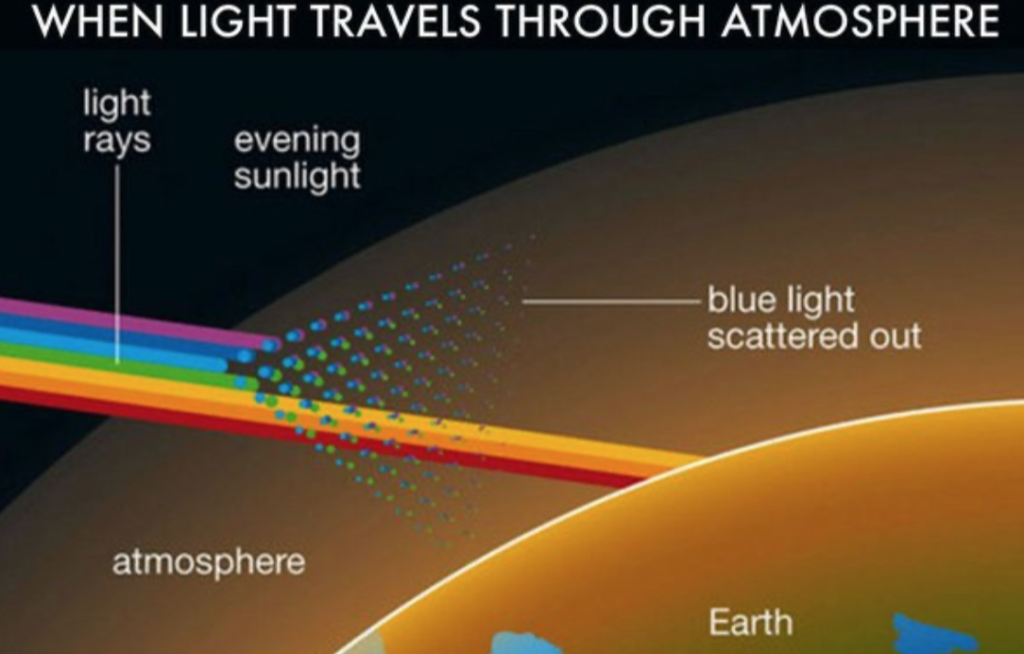
What's all that InfraRed in Sunlight Good For
Sunlight’s UV energy makes Vitamin D and Nitric Oxide. Sunlight’s visible energy allows us to see. The blue light in visible light sets our circadian rhythms and improves our mood, and the red light in visible light penetrates deep into our mitochondria to increase their efficiency. So what does all that infrared in sunset do for us? It warms us. It is the infrared energy in sunlight that produces heat.
Whereas UV light can burn and blister your skin with overexposure, infrared warms. Infrared energy enters the water molecules in your skin and blood vessels and warms the water inside you. You get warmed from within.
Infrared’s warming property makes it an efficient heat therapy to induce sweating, detox, athletic recovery, and improved circulation. Hence the development of infra-red saunas.
Infrared is heat. The more heat a piece of metal or a part of your body releases, the more infrared energy it releases. Night goggles work because they use infrared sensors to pick up the heat from us. They are infrared sensors.
Putting it All Together
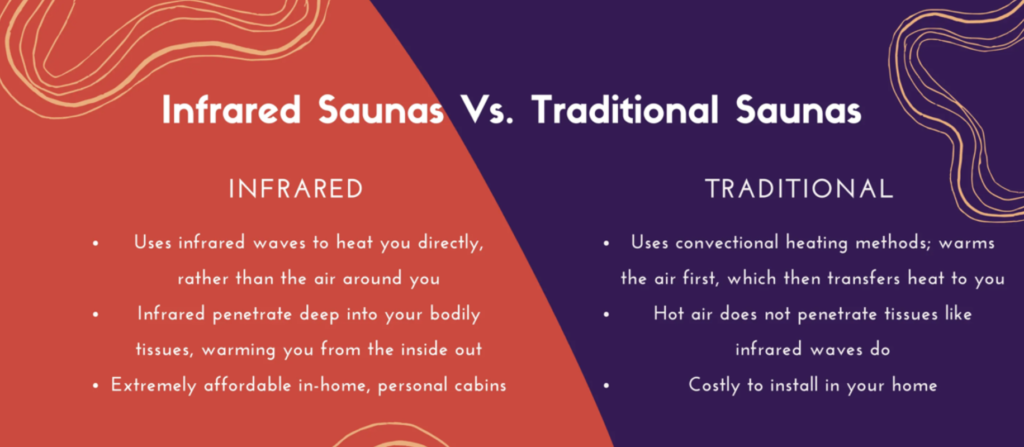
Called Heliotherapy in the past, sunlight was and is a powerful health tool. Looking at life from an energy perspective, you realize that sunlight is as vital to our health as diet and exercise.
Sunlight synchronizes all our biological clocks. It makes feel-good neurochemicals during the day and produces a sedative at night. Sunlight’s UV energy makes Vitamin D and Nitric Oxide one of the most essential anti-aging molecules. Our mitochondria, our body’s power factories, literally absorbs sunlight’s radiant energy to keep us functioning. Sunlight heals, restores and rejuvenates.
In this part 1, we explored how sunlight maintains our health and vitality. In part 2, we will use this knowledge to create our own heliotherapy to meet our unique needs.



